This year’s edition of Art Dubai, West Asia’s most significant art fair (which ended on March 5), was its strongest yet, with 130 galleries from 40 countries participating. Now in its 16th edition, the fair positions itself as a window into the world of the Global South — an oft contentious term for countries in Asia, Africa, Latin America and Oceania — whose visual artistic practices would be harder to access were it not for such a platform.
In 2023, 30 galleries debuted at the fair, much to the delight of Pablo del Val, its artistic director. “Art Dubai is a place where non-traditional, non-western practices can be showcased,” he says. “This year, the galleries that participated were outstanding in the way that they illustrated what is happening outside general western art centres.”
Pablo del Val, artistic director
| Photo Credit:
Augustine Paredes
Dubai, with its multi-national, multi-ethnic populace, is today a gateway to different parts of the world, and once again booming. At Art Dubai one can wander from a booth housing Saudi artists to another showing Iran’s. Art from Lebanon, Jordan, Pakistan, India, Turkey, Philippines, Korea, Kenya, Zimbabwe, Argentina, and various parts of Europe are exhibited under one roof. “The participating galleries represent 4% of any western art fair. We are that 4%,” says del Val.
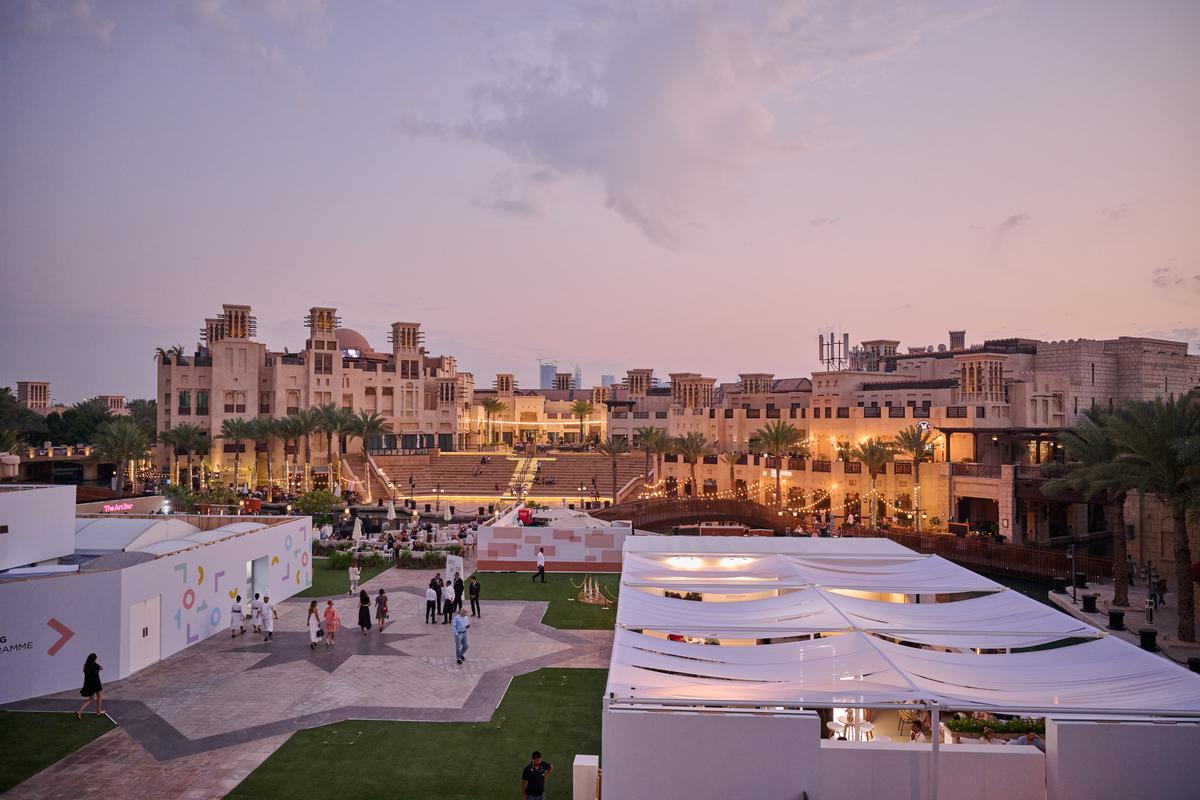
The festival at Madinat Jumeirah
| Photo Credit:
Spark Media
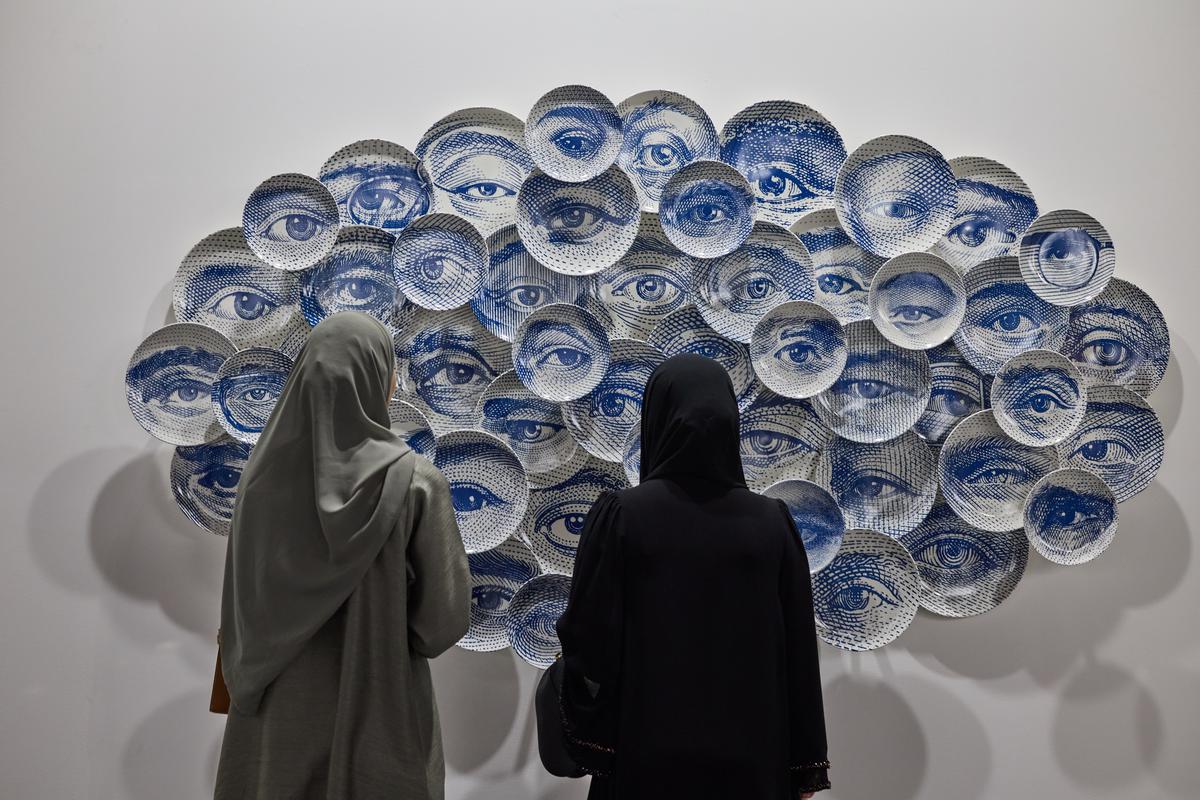
Visitors at Art Dubai
| Photo Credit:
Christopher Pike
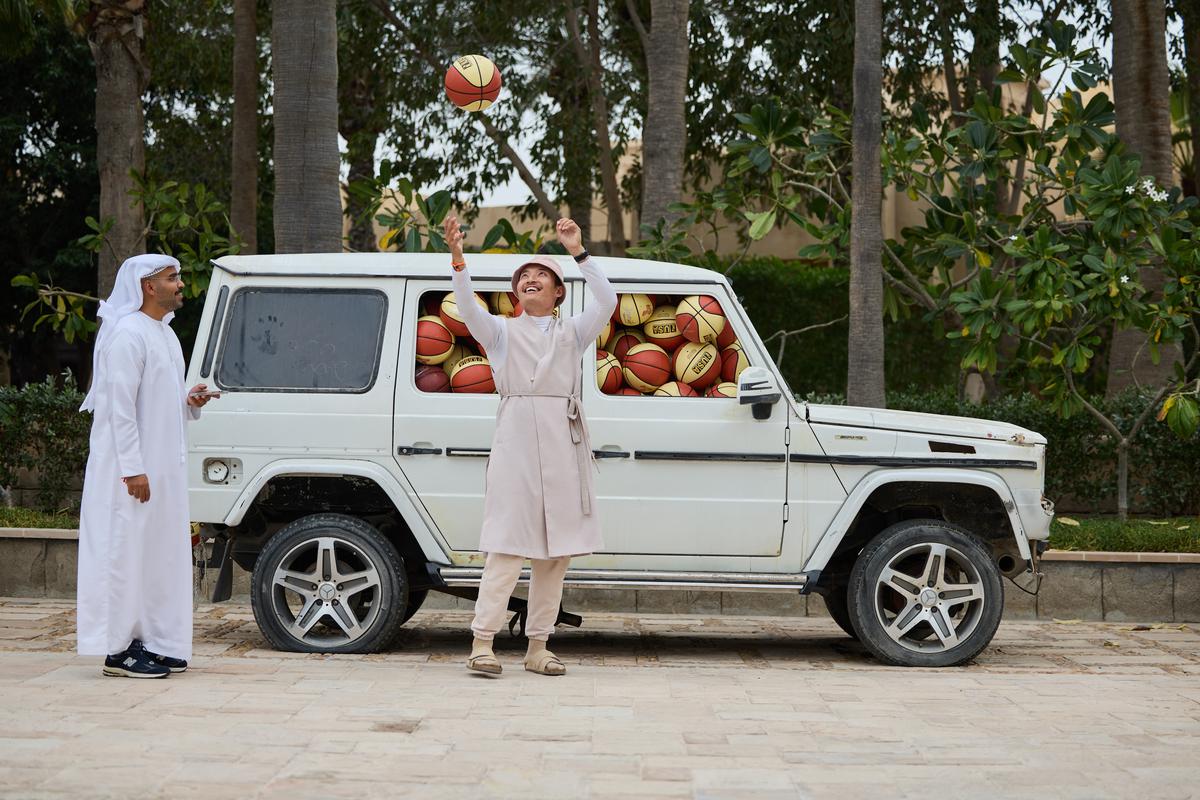
Julien Boudet’s Explosion pays tribute to the Mercedes G Wagon, Dubai’s most popular car
| Photo Credit:
Christopher Pike
A gateway for the arts
The fair is also in stark contrast with other Asian fairs such as Hong Kong (Art Basel) and the newly-launched Singapore (Art SG) precisely for this reason. Hong Kong, for example, experienced a gold rush of sorts in the first decade of the century, as many western galleries sought to cash in on China’s financial prowess. Dubai, on the other hand, was slower in its arts eco-system development.
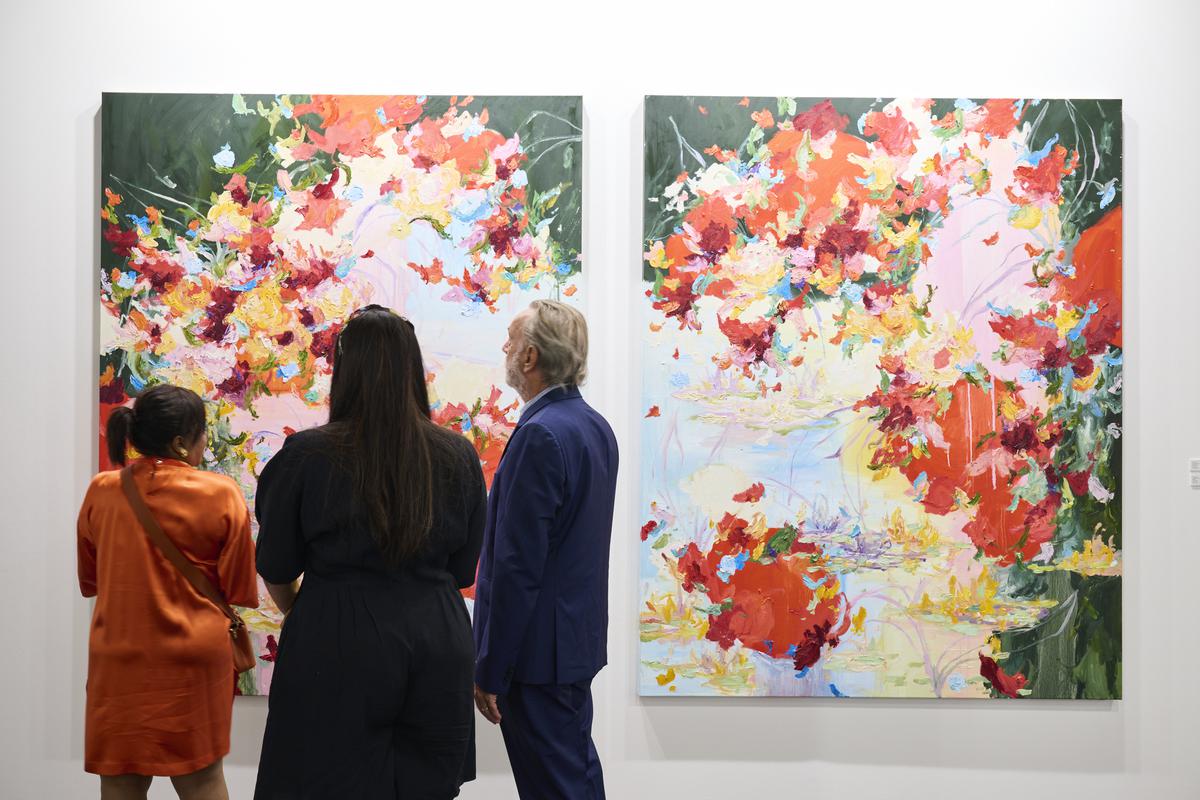
Visitors at Art Dubai
| Photo Credit:
Cedric Ribeiro
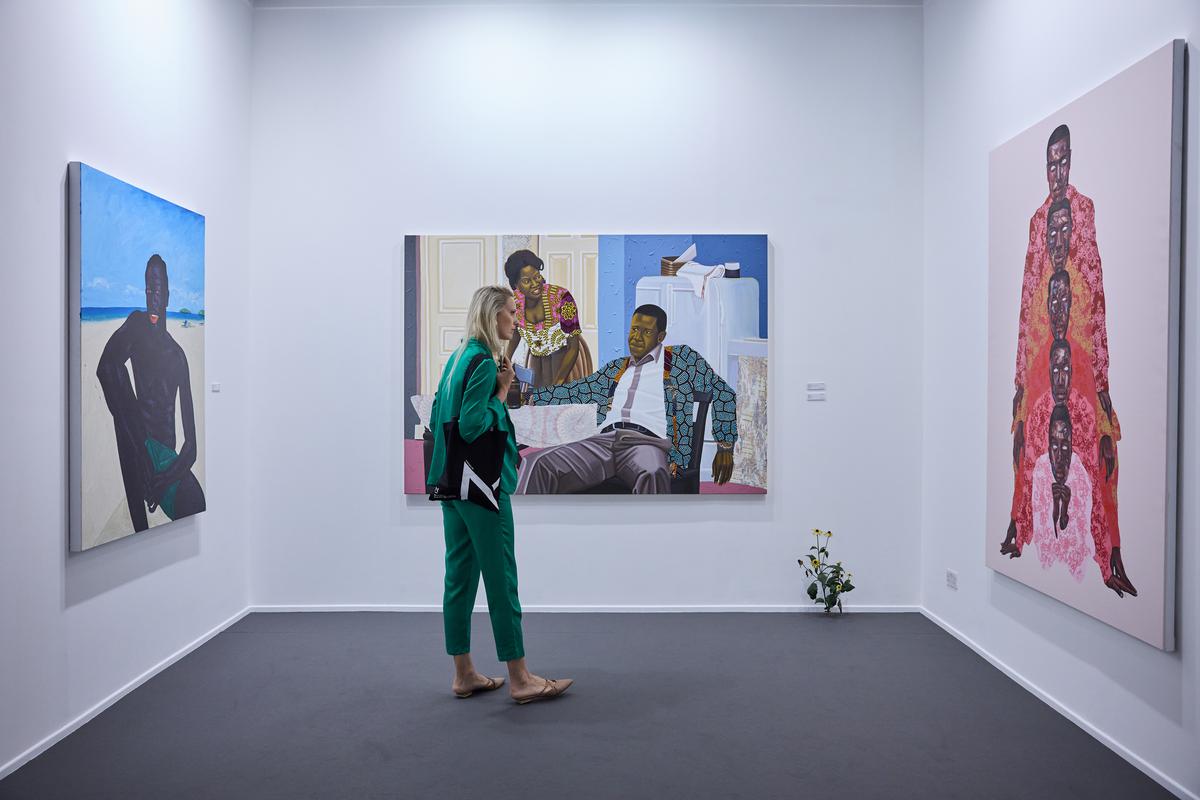
Artwork at the fair
| Photo Credit:
Christopher Pike
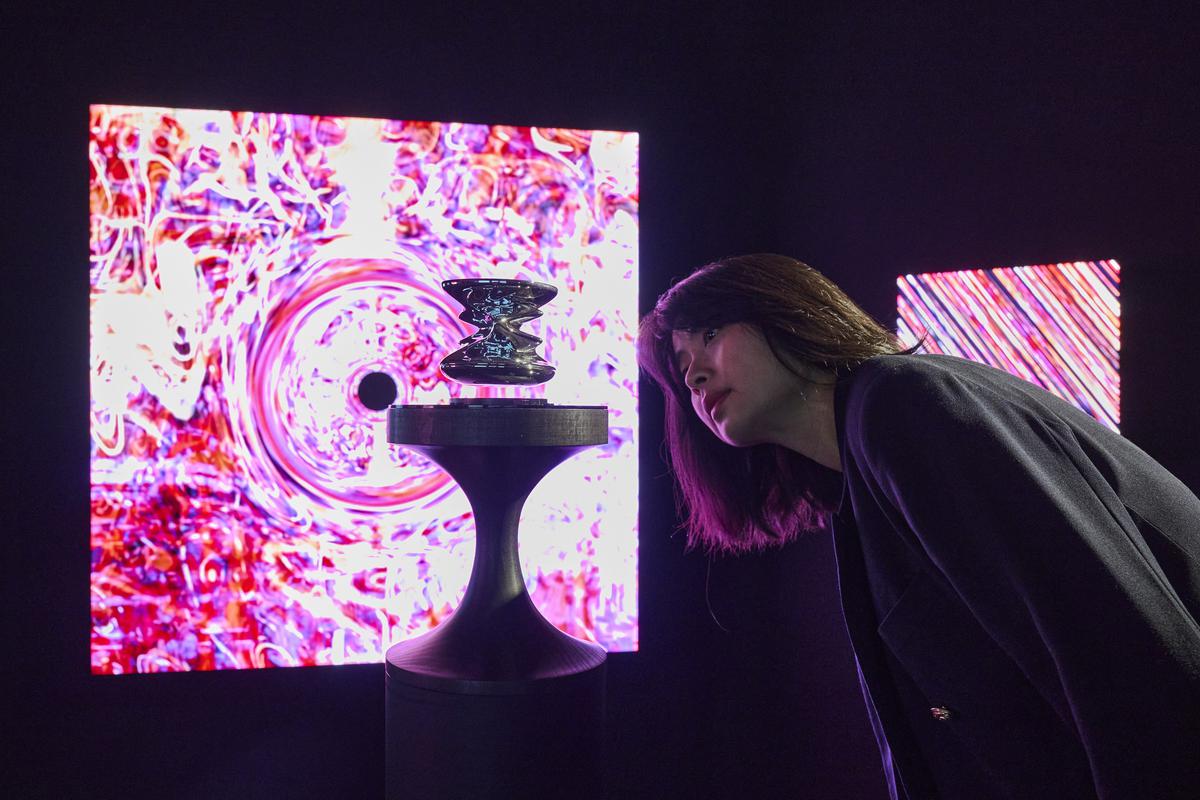
Installations at Art Dubai
| Photo Credit:
Cedric Ribeiro
“Art Dubai is not a fair that contextualises the West to the East,” says del Val. “The growth of the city is happening in a more logical and organic way. It’s not like in Hong Kong where suddenly 35 galleries come and invest. Dubai is a place where collectors are building because they have the right references. They can go to Jameel Arts Centre, Louvre Abu Dhabi, and to Tashkeel, amongst many other places. You can see an exhibition at an international level in an institution or a gallery. There are institutions, non-profit programmes, foundations, grants, museums that are allowing the country to not just import but also produce art. This is now a production centre where artists are living and producing.”
It is where you can find the Jordan-based Palestinian sisters Nisreen and Nermeen Abudail of the Naqsh Collective working in marble, wood and stone, at Azerbaijani gallery Gazelli Art House; miniature style paintings on plates by Pakistani artist Adeela Suleman at Karachi’s Canvas gallery; and photography on political repression in Iran by Siamak Filizadeh at Tehran’s Navahi Projects. And that’s the tip of the iceberg.
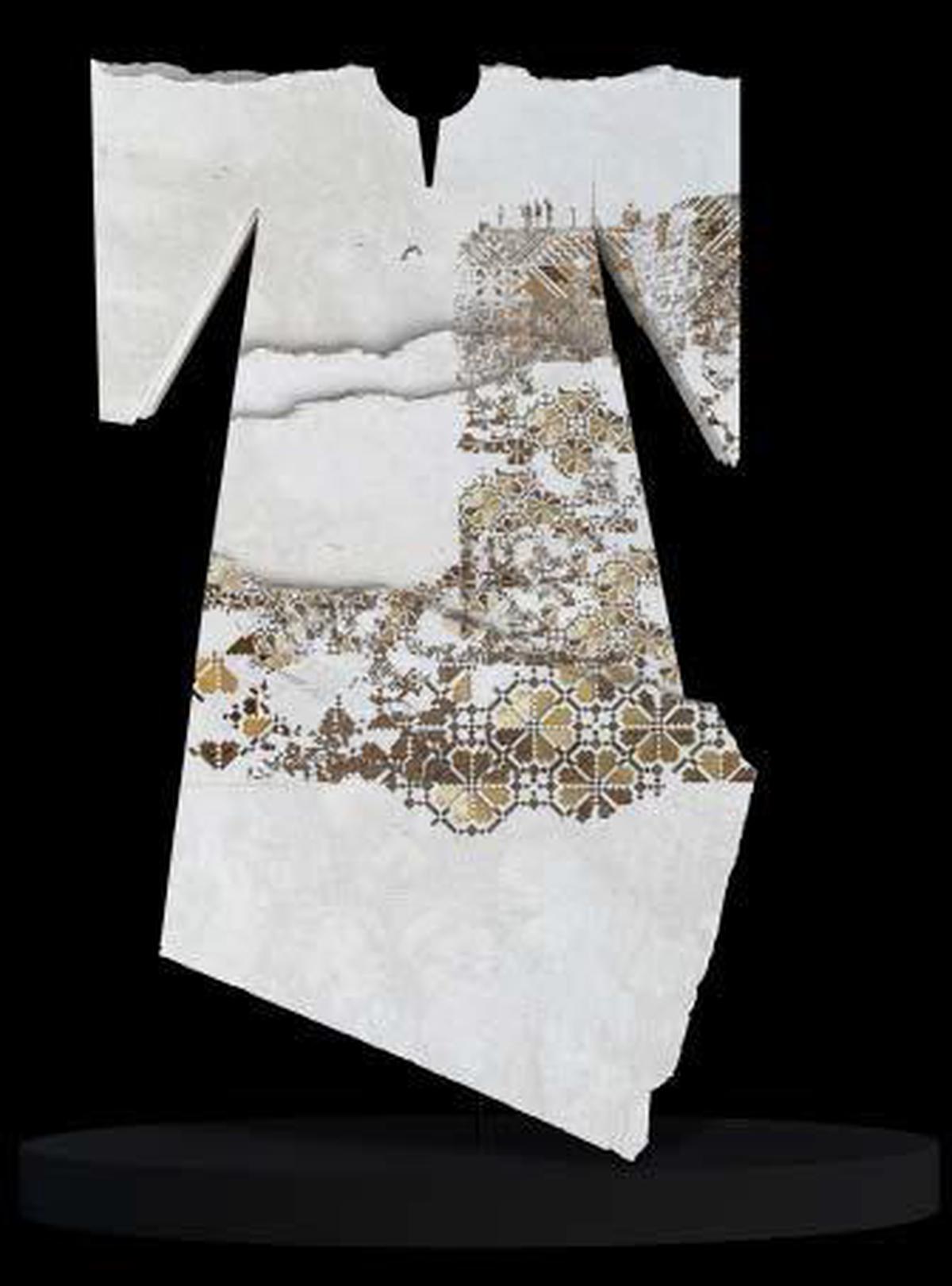
Beit Dajan Thobe (Naqsh Collective), natural stone with brass
| Photo Credit:
Gazelli Art House
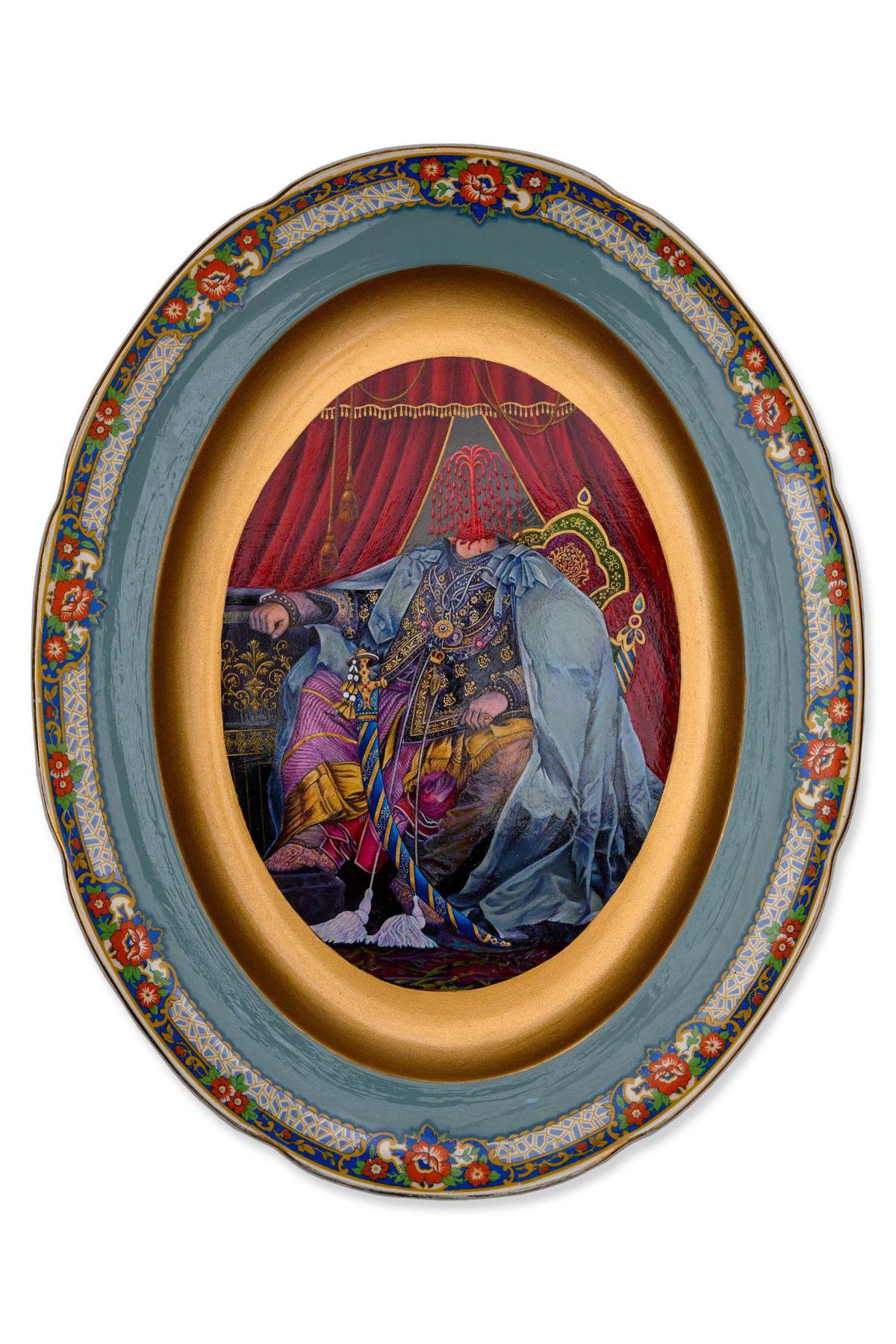
Adeela Suleman’s A Pricely Redemption
| Photo Credit:
Canvas Gallery
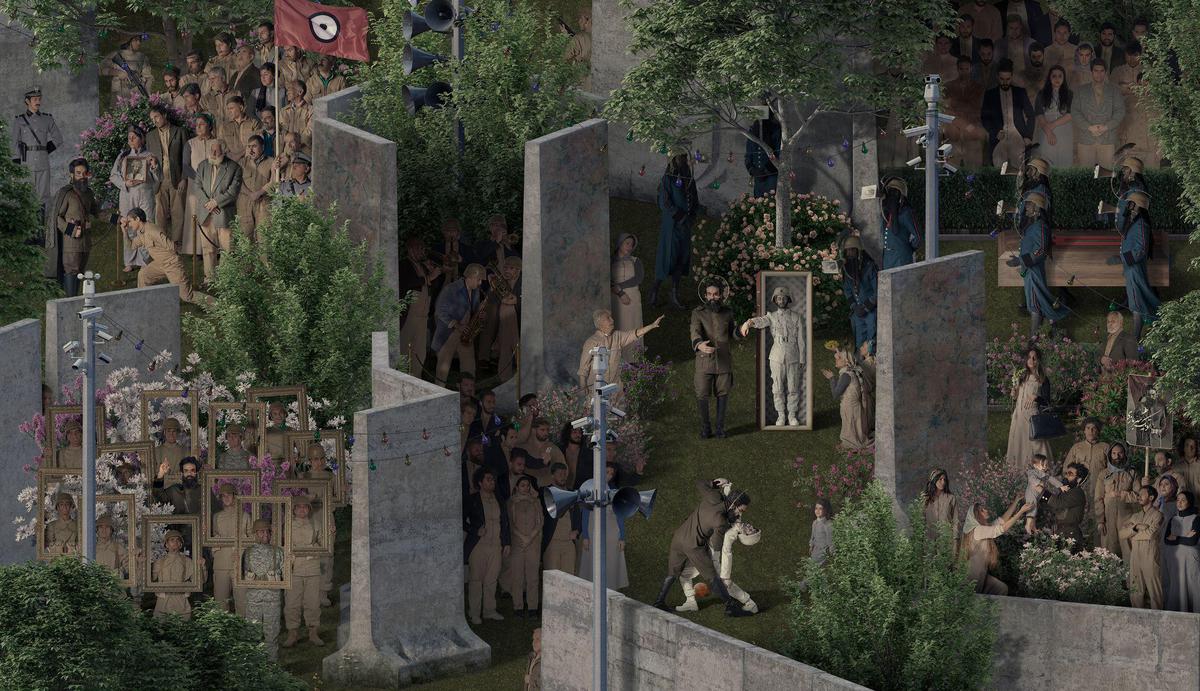
Siamak Filizadeh’s Raising of Lazarus
| Photo Credit:
Art Dubai
Following the money
Sales was much stronger than previous editions. Among the many deals struck, storied Dubai-based gallery Lawrie Shabibi sold two sculptures by Jordanian artist Mona Saudi priced between $120,000 to $350,000, and a work by UAE artist Shaikha Al Mazrou for $38,000. Multi-city gallery Kristin Hjellegjerde sold seven pieces at the preview to individual collectors based in Dubai, the Gulf and Europe, including Egyptian artist Nasir Tanbouli’s Magical Encounter for $25,000, South African artist Kimathi Mafafo’s Your Gaze Tells a Story I for $12,000, and Italian artist Bea Bonifini’s Pendulum Soul for $20,000.
Conflict and the contemporary
Long-time Dubai-based collector Amer Makki, who principally collects Syrian, Lebanese and Palestinian art, says that he is impressed by how the fair has evolved over time. “I find art from other parts of the world, where there are also conflicts — we need to see that art and support it,” he says. Nadia Samdani, the Bangladeshi art collector and patron of the critically-acclaimed Dhaka Art Summit, says she really enjoyed the 2023 edition. “It is an important fair for the region,” she notes. “The audience is from all over the world because Dubai benefits from its location.”
Divided into four sections — Contemporary, Modern, Bawwaba (meaning gateway), and Digital — Art Dubai is not as sprawling as other global art fairs, but therein lies its charm. “I am drawn to younger, contemporary artists and this year I particularly liked the Bawwaba section,” Samdani says. She discovered the Filipino artist Gregory Halili at Silverlens Gallery (Manila and New York) and Nepalese artist Youdhisthir Maharjan at Blueprint 12, a New Delhi-based gallery.
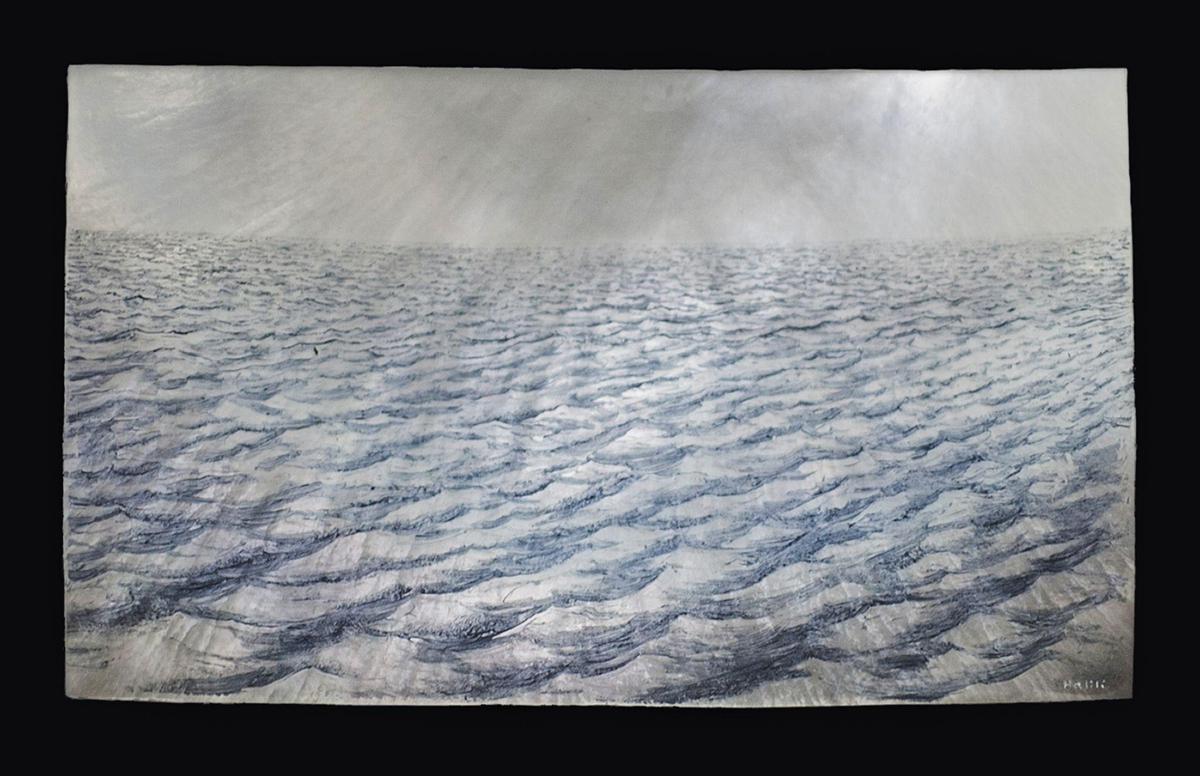
Gregory Halili’s The Sea III
| Photo Credit:
Art Dubai
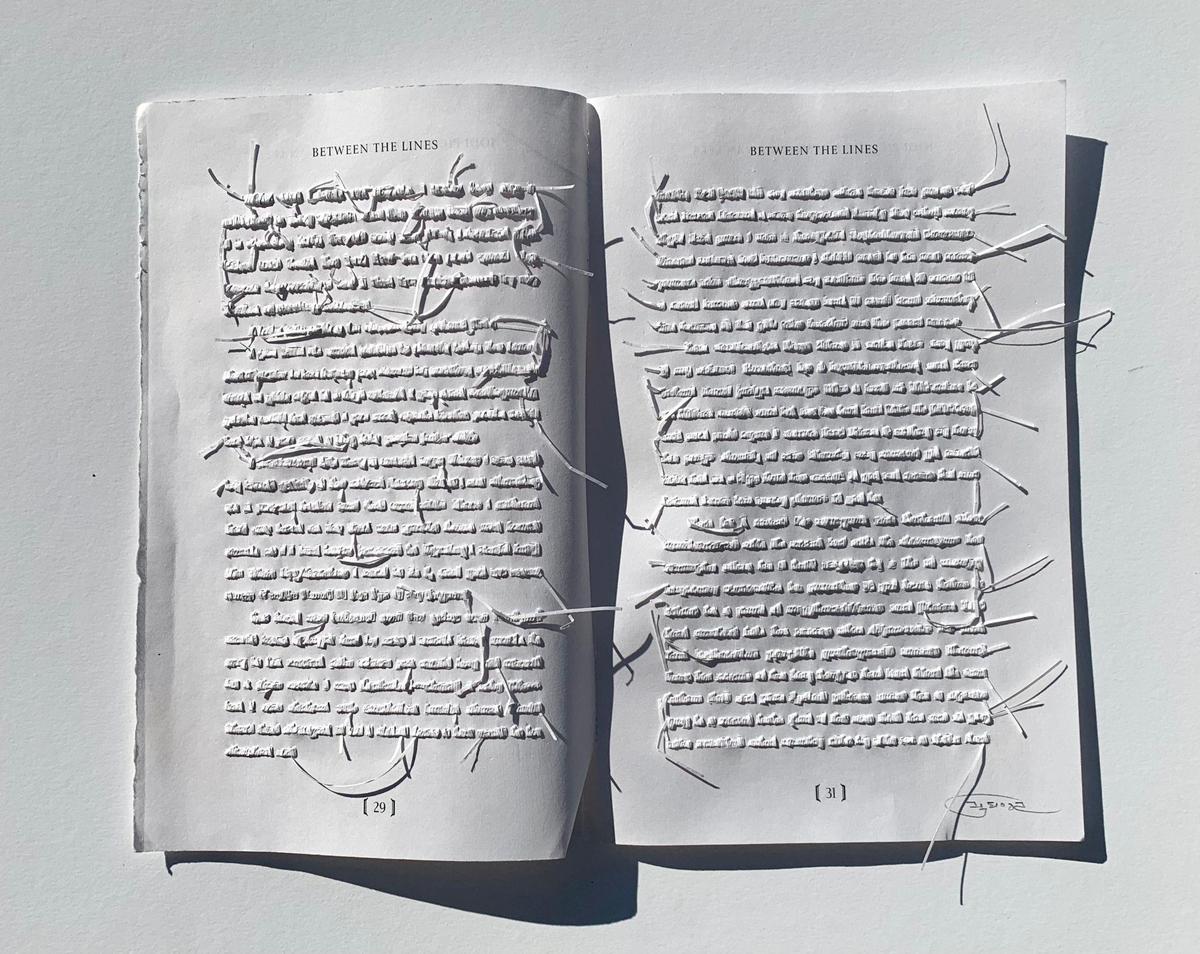
Youdhisthir Maharjan’s Between the Lines – hand embroidered book strips on reclaimed deacidified book pages
| Photo Credit:
Art Dubai
The fair’s digital section was curated by Singaporean Clara Che Wei Peh, who explored how artists are using technology to further their art. It was a stronger, more assured showing compared to last year, with an abundance of AI generated works that included art that used algorithms to create content in real time.
On preview day, the UAE Art gallery displayed six works from Jason Seife’s Modern Genesis series — in which the Cuban-Syrian artist worked off an existing Golestan Tabriz carpet and then 3D sculpted and animated each part of the found design. The pieces, priced at $2,500 each, were all snapped up. Elsewhere at the fair, UNIT London sold a $400,000 Tyler Hobbs NFT to a European collector. Christie’s also held its first Art +Tech Summit in Dubai, which explored Web3, AI, blockchain and robotics as they relate to art. This evolution of the art-technology dialogue is likely due in part to some of the dust settling post the collapse of crypto and decline of NFT trading.
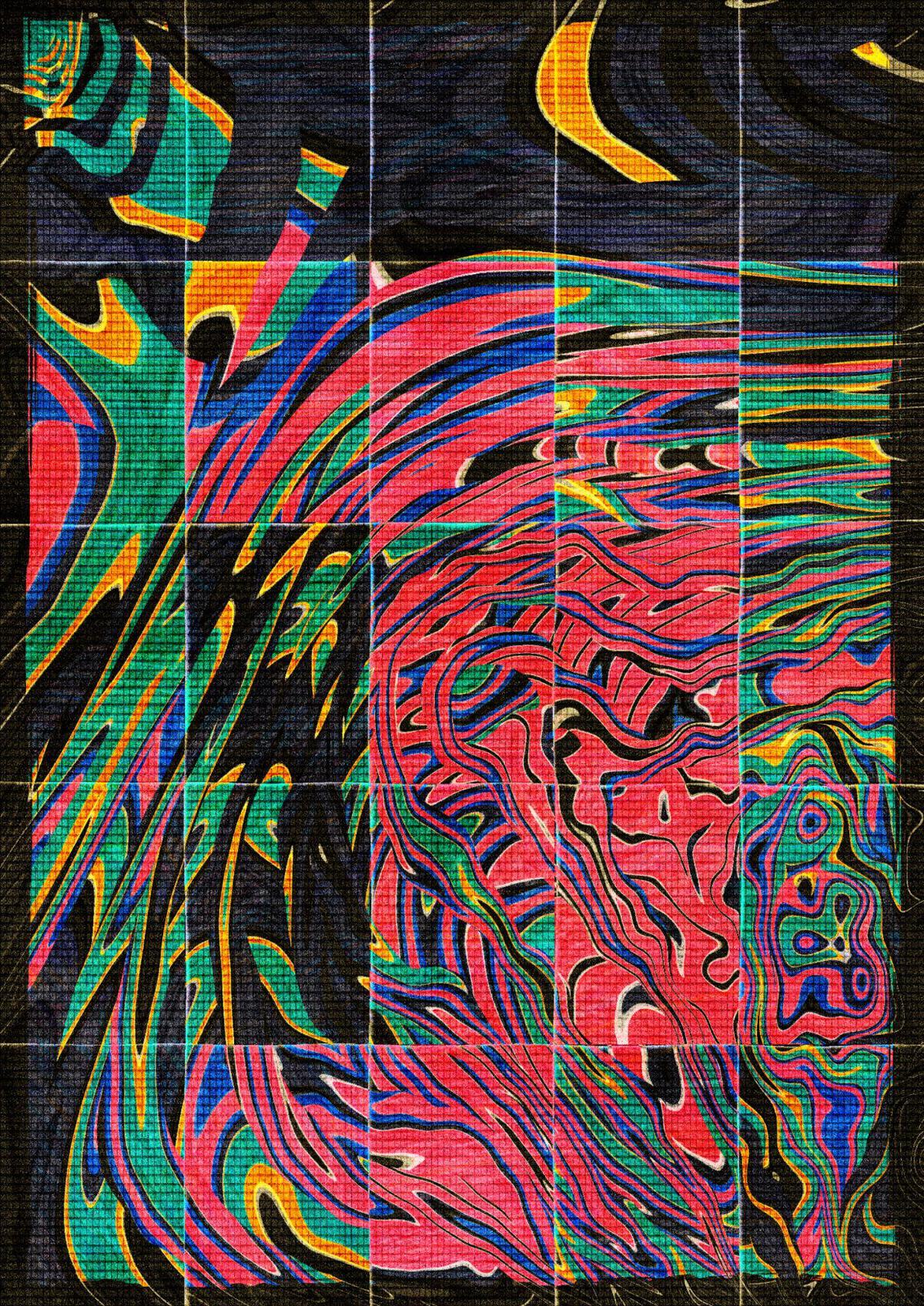
William Mapan’s Anticyclone
| Photo Credit:
6529 Museum of Art
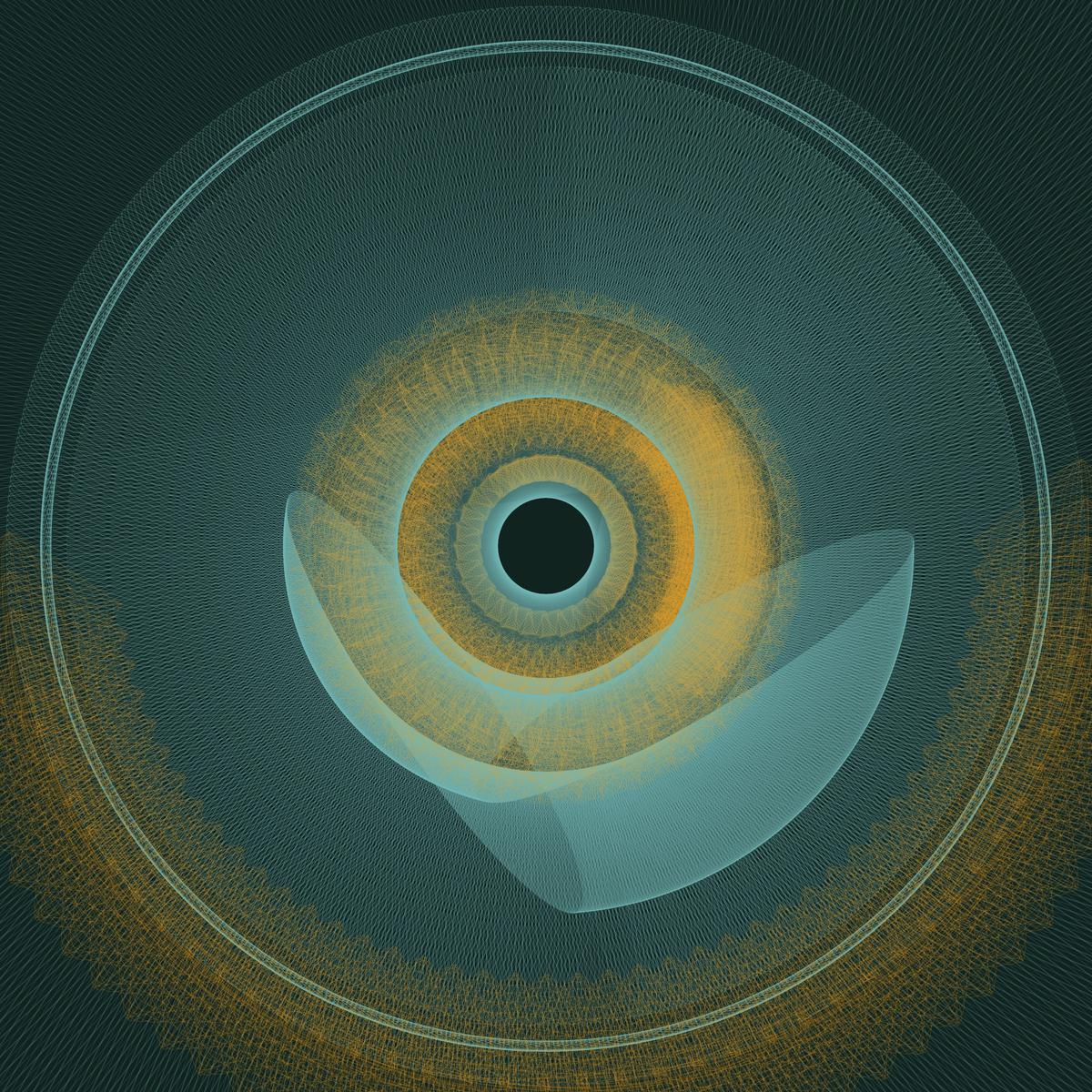
Iskra Velitchkova’s NFT, Lines and Bone: Study of Direction
| Photo Credit:
UNIT London
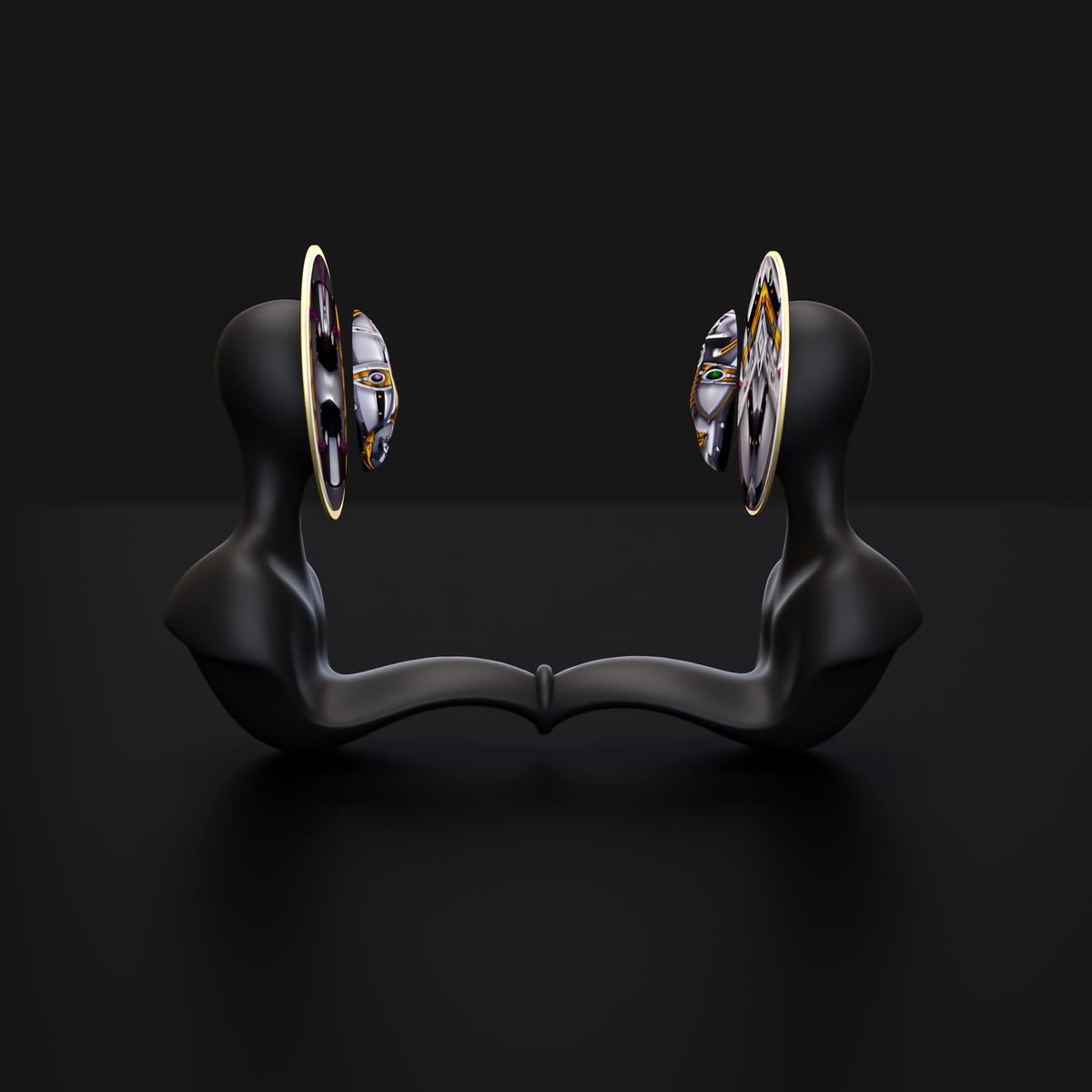
Fabin Rasheed’s Formless
| Photo Credit:
Art Dubai
India’s strong outing
India’s presence at Art Dubai was significant, with nine marquee galleries represented. Indian gallerists reported strong sales and they noted that the fair strengthens their engagement and exposes them to the burgeoning diaspora in the city.
One of the highlights was Chaupal: A Journey Through South Asia, a series of site-specific performances by 10 South Asian artists that explored the idea of food, ritual, community gatherings and lived histories — with each artist invited to design a dish based on their artistic practice. “Sometimes I say Dubai looks more South Asian than Middle Eastern,” del Val says, with a laugh.
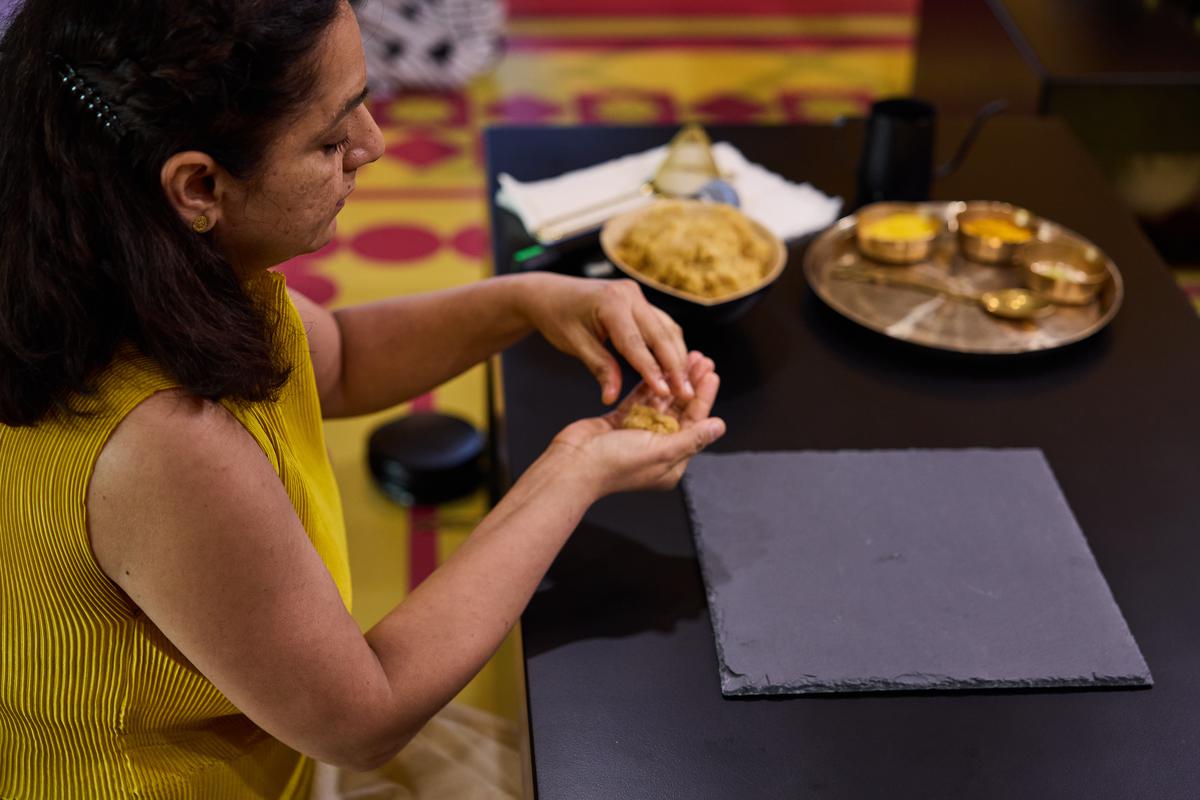
Exploring food at Chaupal
| Photo Credit:
Christopher Pike
Amol Patil performing at Chaupal
| Photo Credit:
Art Dubai
Chaupal: A Journey Through South Asia
| Photo Credit:
Christopher Pike
In conclusion, he adds: “Art Dubai represents the DNA of Dubai, which is a country and a city that is built up by so many micro societies. Sensibilities are so different. Here you will find art you will not find elsewhere.”
The writer is a Mumbai-based journalist and author.
Don’t skip Sharjah
Also overlapping with Art Dubai this year is the 15th edition of the Sharjah Biennale, which ends in June. 150 artists are participating with 300 artworks across 19 venues in the city, making it a major attraction for serious art lovers. Among the Indian artists represented at Sharjah are Nilima Sheikh, Anju Dodiya, Varunika Saraf, Prajakta Potnis, Mithu Sen, Vivan Sundaram, and Nelly Sethna.
For all the latest Entertainment News Click Here
For the latest news and updates, follow us on Google News.
